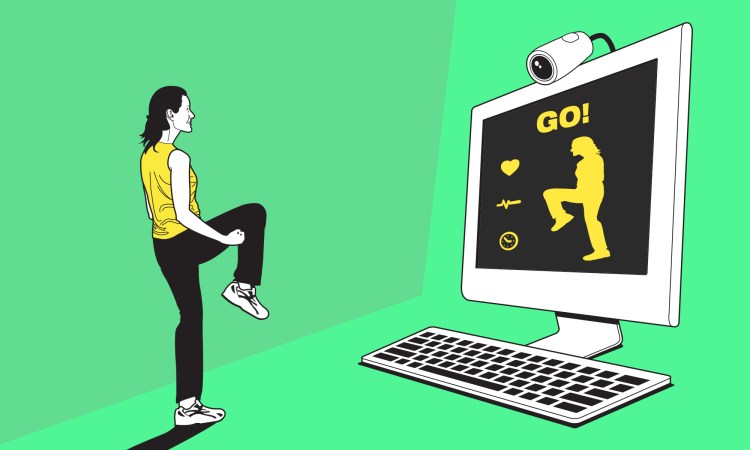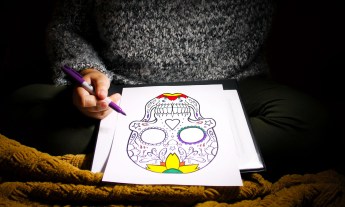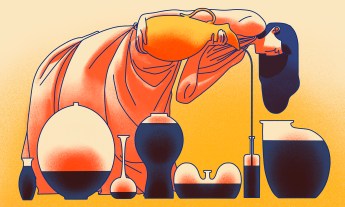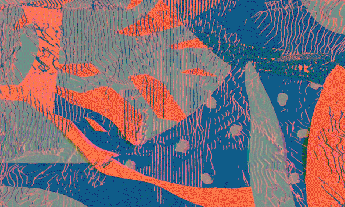
As anyone who’s ever recovered from an injury knows, physical therapy can be painful, boring and slow. TED Fellow Cosmin Mihaiu is out to change that with MIRA, software that disguises physical therapy exercises as fun-to-play videogames. Here’s how it works.
Unlikely — fun! — physical therapy. “Traditionally, a patient doing physical therapy at home is, at most, looking in the mirror. There’s no other feedback or encouragement,” says Mihaiu. MIRA, built by his team in Romania and the United Kingdom, changes that. It’s a set of simple, fun-to-play videogames that encourage precise movement while offering audio and visual stimulus and a sense of achievement. By reaching their onscreen goals, patients also do their physical therapy exercises. So a patient recovering from a broken arm might fly a bee to gather pollen — while flexing and extending the arm. Someone recovering from a stroke might navigate a submarine through water to improve the precision of movement in the shoulder.
Off-the-shelf hardware and tailored exercises produce a personal experience. Each of the ten games offers a range of exercises that can be tailored to each patient’s needs; it’s up to the therapist to prescribe which ones to play, and for how long. Mihaiu and his team built software that can be played via a Kinect motion-sensing input device and a PC. Using readily available and relatively cheap hardware is one way they hope to promote adoption by clinics and hospitals — and eventually by patients at home.
because patients know that their clinicians can see whether and how they are doing the prescribed exercises, they’re more likely to comply.
The inspiration for MIRA: a fall from a tree. When he was seven, Mihaiu fell out of a tree he’d used as a (poor) hiding place. “The doctors encased my arm and torso in a cast, and because I was stuck in that position for six weeks, I could no longer extend my elbow when the cast came off,” he says. A physical therapist prescribed exercises that called for him to flex and extend his elbow 100 times a day. Unsurprisingly, little Cosmin balked at such tedium. But that meant his recovery took far longer than it should have done. Years later, as a computer engineering student at the University of Babeș-Bolyai in Romania, Mihaiu remembered this childhood experience during a brainstorming session for the Microsoft Imagine Cup innovation competition. “We thought, what if we could get people to play their way to recovery?” he recalls. They didn’t win, but the idea stuck, and MIRA — which stands for Medical Interactive Recovery Assistant — was born.
What’s going on in the background is just as important as the game itself. Exercise-based games aren’t new. What’s important about MIRA is what’s going on behind the scenes, as it tracks the number of repetitions a player makes, evaluates speed and range of movement and delivers a report to the clinician. The patient also gets feedback intended to inspire them. “Patients stay entertained and feel rewarded as they watch themselves advance from level to level, gathering points and so on,” says Mihaiu. “They feel like they’re making progress — and of course, by doing the exercises, they actually are!” An added psychological twist: because patients know that their clinicians can see whether and how they are doing the prescribed exercises, they’re more likely to comply.
MIRA can hasten recovery — and ease the pressure on the medical system. MIRA won’t replace the need for regular physical therapy visits, but if it helps patients to keep doing their exercises, then it’s likely their recovery time will be reduced. That means therapists are freed up to work with other patients. “A clinician will always know best what the patient needs,” says Mihaiu. “But we anticipate that MIRA will, in more cases than not, speed recovery, which would reduce the need for clinic visits. It’s great that patients are getting better more quickly, while potentially also saving the medical community time and money.”
Imagine a system that might help those with conditions such as Parkinson’s, Multiple Sclerosis, or Alzheimer’s.
MIRA is suitable for patients of all ages. “Most of the games we’ve developed so far are for the rehabilitation of upper limbs, but we’ve recently finished developing some exercises for fall-prevention for the elderly,” says Mihaiu. “These focus more on lower-body movements: squats, hip abductions, sit-to-stand movements, and so on. The idea is to strengthen the muscles and increase balance, to prevent falls.” This is a bigger problem than you might think: according to the UK’s National Institute for Healthcare and Excellence, 30% of people over 65 and 50% of people over age 80 fall at least once per year.
MIRA could also be used to help stroke recovery or those with dementia, Parkinson’s and multiple sclerosis. Mihaiu hopes that this is just the start for a MIRA franchise that works beyond orthopedic injuries. He envisions a system that may also be used to administer beneficial exercises for — or even help diagnose — such conditions as Parkinson’s, MS or Alzheimer’s, to help alleviate problems with tremors, balance, muscle strength and so on. His team is developing a version of the game that could be used at home (at the moment it’s only available in clinics and hospitals in Europe and the United States). They’ve also created a prototype game for speech and language therapy, which is now awaiting clinical trial.
Featured illustration courtesy iStock/noun project.












